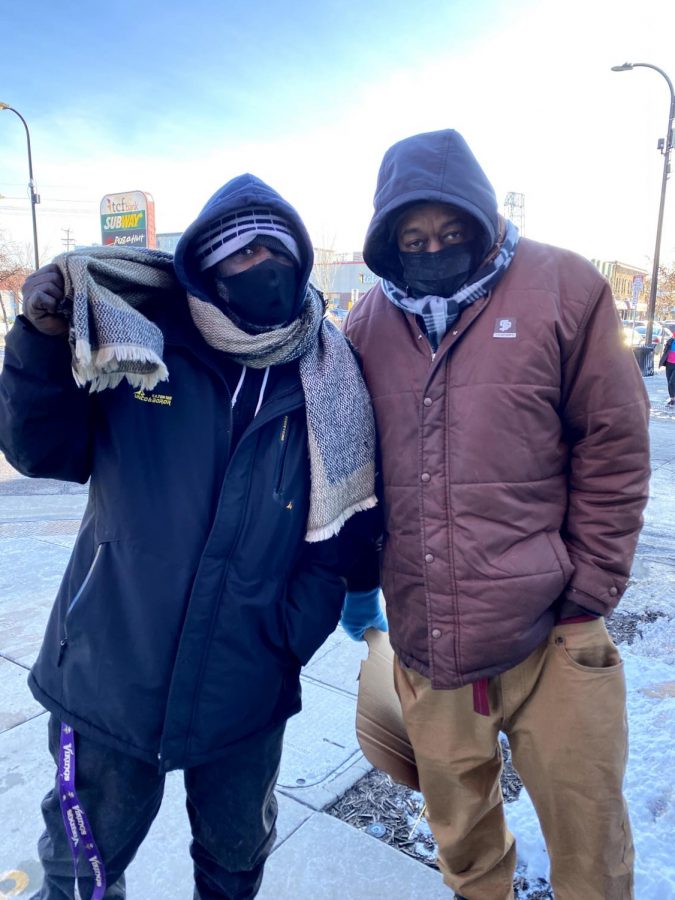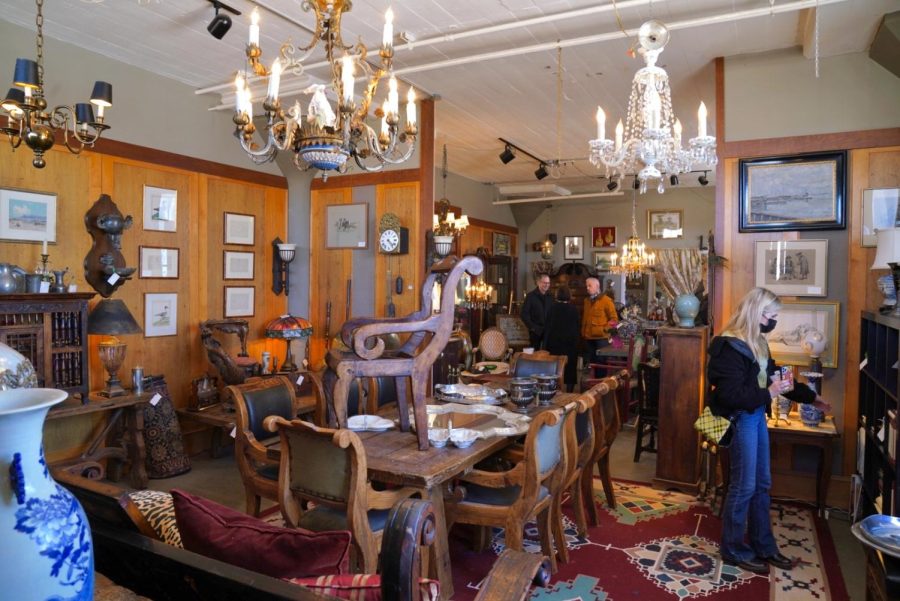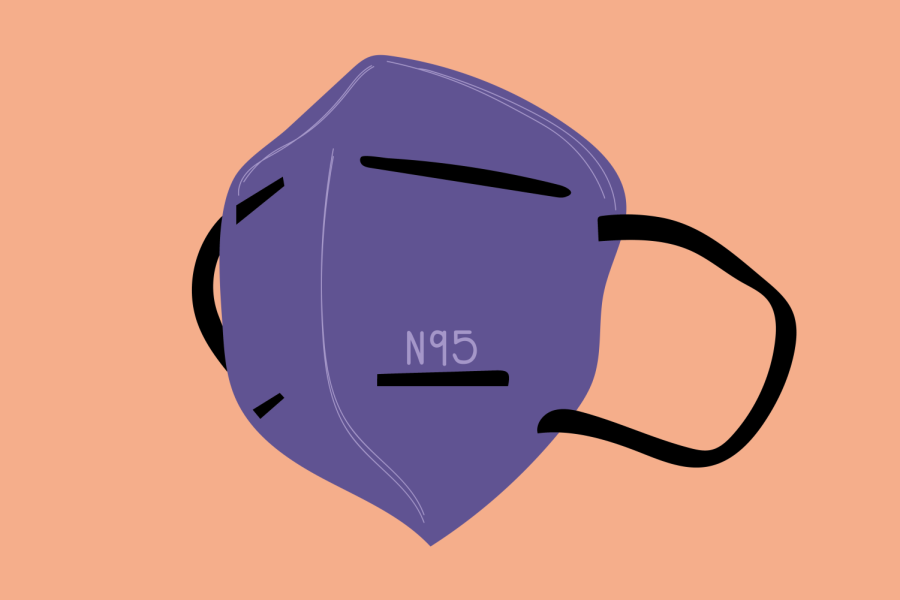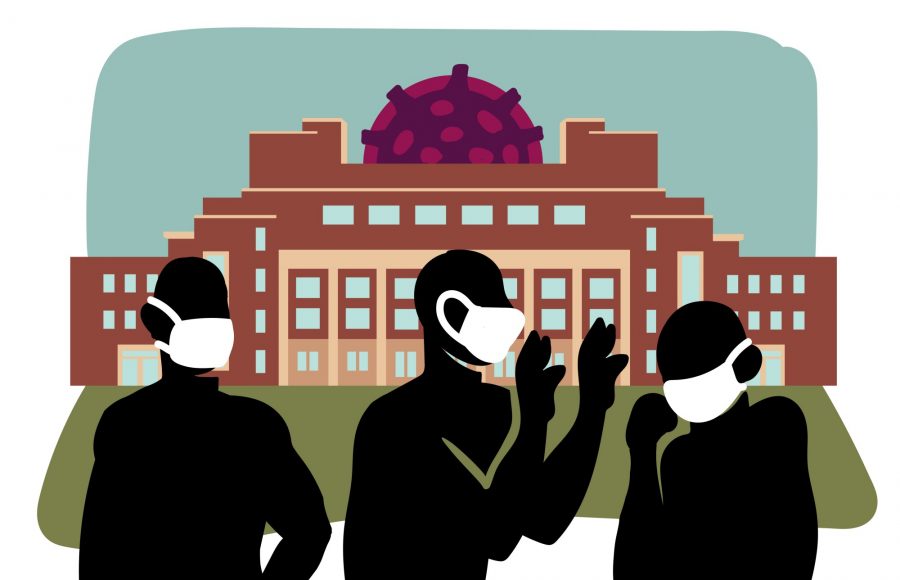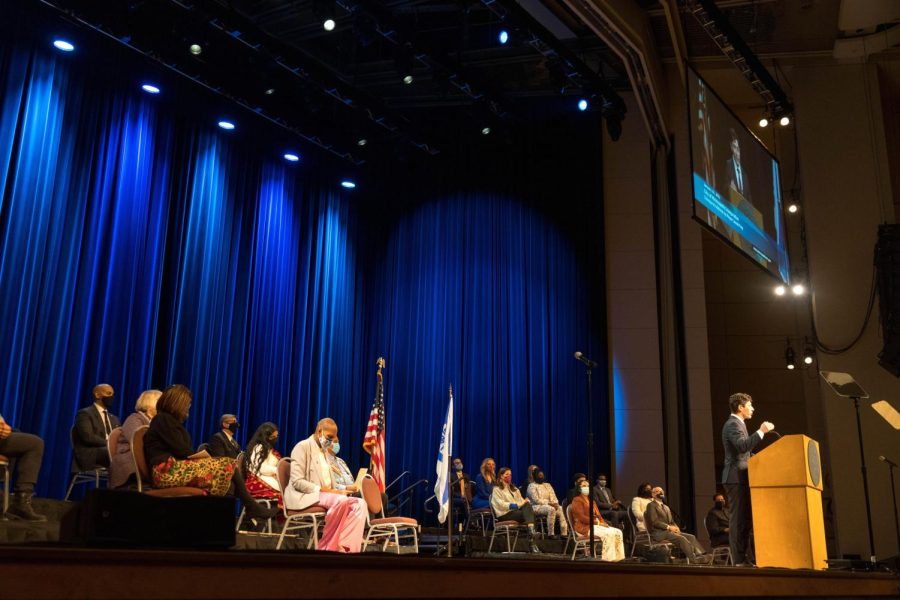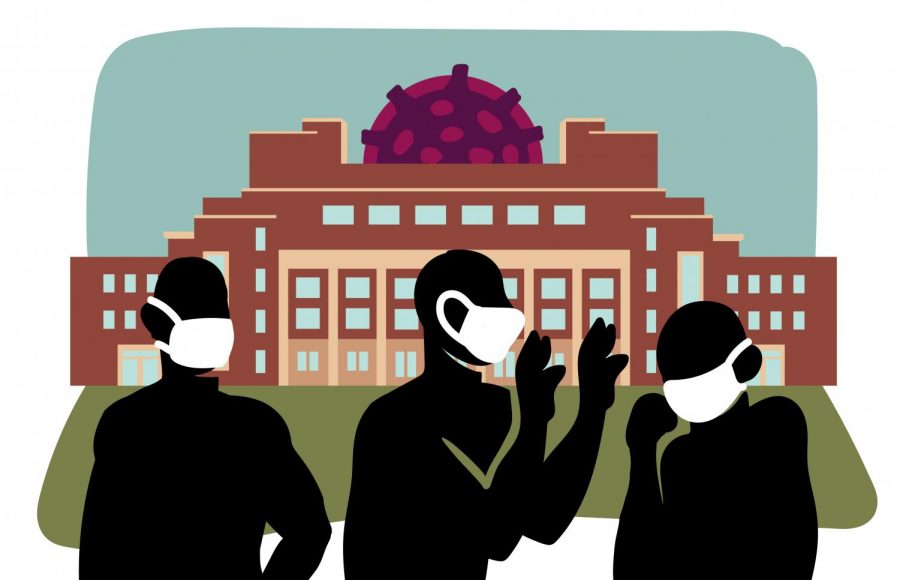There’s a common misconception that homeless people will spread COVID-19 like a wildfire, said Ro, a 53-year-old man who has been homeless in the Twin Cities for the past five to 10 years. Ro declined to give his last name for privacy reasons.
While COVID-19 has deeply impacted the lives of homeless people, the number of positive cases does not support the idea that they are mass coronavirus spreaders in the Twin Cities.
“It’d be more people you don’t expect; … that’s who are going to be the ones that get [COVID-19] and pass it [more] than you would [expect] with a homeless person,” Ro said as he stood outside of the Dinkytown Target bundled in a sweatshirt, jacket and mask.
According to Ro and Bones, another homeless man who stood outside of Target on Jan. 25, positive COVID-19 cases have not been as much of a problem among the homeless community when compared to surrounding communities. The two only personally know of a few homeless people who tested positive.
“I don’t know anybody really [who’s homeless] who’s died from COVID,” Ro added.
Homeless shelters in Minneapolis and St. Paul reflect a lower trend of COVID-19 cases among residents when compared to the general population, according to the Minnesota Department of Health (MDH). Shelter leaders say part of why homeless shelters have reported low case counts is because of the early steps and adaptations they made.
Fewer infections among Twin Cities’ homeless communities
The state has had 582 positive cases among homeless people in shelters and 152 among nonsheltered homeless people as of Feb. 16, according to the MDH. Statewide, there have been 475,379 total cases for that same time period.
The Hennepin County Office to End Homelessness worked with shelters throughout the county in 2020 to establish effective isolation spaces, said David Hewitt, the office’s director. The office also allocated $3.2 million in 2020 to make physical modifications to shelters, including new airflow systems and plexiglass partitions throughout buildings.
Hewitt said it was important that shelters have the ability and resources to continue offering services safely throughout the pandemic because homeless people continue to face the everyday risks — such as starvation, dehydration and hypothermia — that they always have.
“Our community serves thousands of people, … and we need it to continue doing so,” Hewitt said. “The risks that are always there don’t go away [because of the pandemic].”
Union Gospel Mission shelter opened a COVID-19 wing for isolation on Nov. 16 and screens everyone who walks into its buildings, said CEO Pam Stegora Axberg.
Another Minneapolis shelter, Haven Housing, does not allow visitors in its buildings and implemented telehealth services for residents, said the shelter’s director of programs Sesany Fennie-Jones.
By incorporating these safety measures, among others, shelter leaders say they have been able to continue offering basic and necessary services throughout the pandemic while keeping COVID-19 cases low.
“People facing homelessness have actually been underrepresented amongst those who have tested positive [in Hennepin County],” Hewitt said. “Our community has been successful in limiting COVID-19 cases.”
Haven Housing has had four positive cases among its homeless residents since the beginning of the pandemic. In comparison, Hennepin County has had roughly 746 cases per 10,000 people since March, according to a Minnesota Daily analysis of MDH data. That count includes positive homeless cases.
Union Gospel Mission, located in Ramsey County, has recorded 73 positive COVID-19 cases since March out of the roughly 300 people the shelter serves every week. In that same time frame, Ramsey County has had about 736 cases per 10,000 people, including positive homeless cases, according to the Minnesota Daily analysis of MDH data.
Unexpected risks
Although shelters have taken safety precautions, they have not wholly eliminated COVID-19 as a threat: Staff can potentially bring the virus into facilities.
“Across all of the shelters in Minnesota, what I’m hearing is it really isn’t our residents that put themselves in harm’s way. It’s more about the staff becoming positive, and they come into our facility, and that starts the issue,” Fennie-Jones said.
Haven Housing has only had three positive cases among staff members, Fennie-Jones said. Union Gospel Mission has had a higher rate of COVID-19 among staffers. By the end of November, 21 out of 118 staff tested positive after the shelters saw a spike in cases, along with the rest of the community that month, Stegora Axberg said.
When staff infections spiked, infections among the homeless residents in the shelter also spiked, Stegora Axberg said. Union Gospel Mission had fewer than 50 positive cases among homeless residents before the spike in numbers.
The shelter began conducting weekly on-site testing after the uptick. They did not have any new staff infections, and there were only a few resident infections in January, Stegora Axberg said.
“Homeless people have not been the carriers,” Stegora Axberg said. “It is primarily our employees who are out mixing with the general public … that have more often been the ones to get COVID and then to expose those we serve with COVID.”
Stegora Axberg compared homeless shelters to long-term care centers, saying employees are introducing and spreading the virus, not necessarily the people who stay there. Nobody can assume that staff members get infected in their day-to-day lives versus on the job, she added.
Shelter staff infections a potential deterrent
Todd Feske, founder of Walking With a Purpose, an organization aiming to end chronic homelessness through tiny home villages, reiterated the idea. He said the homeless community has not had widespread cases of the virus because, outside of shelters, the state’s homeless residents are an already highly isolated community.
“As far as the homeless community, … they’re not hit that much. But then you have to think about it: They’re not indoors that much,” Feske said. “[For] these people, social distance is a lifestyle.”
Walking With a Purpose did not hear about any positive cases in the camps it provides resources for until last December, Feske said.
Feske also said many homeless people do not want to go to shelters because shelters provide a risk for them, as they interact with more people, including staff who they may not trust to follow COVID-19 protocols.
This is precisely why Ro and Bones said they would fear for their health and well-being if they went to a shelter.
According to the pair, because shelter workers have their own homes and socialize in different circles, they may be more susceptible to contracting the virus and unknowingly spreading it to vulnerable homeless people.
“I’m 64 — if I catch it, I’m done,” Bones said. “I know how to die; I don’t need help.”
Ro and Bones think they are safer on the streets than in shelters because they are not congregating and going outside of their already isolated circle, in which most people have yet to contract the virus.
“People think street people catch it more than anyone else, … but it ain’t what I’ve seen,” Ro said.


